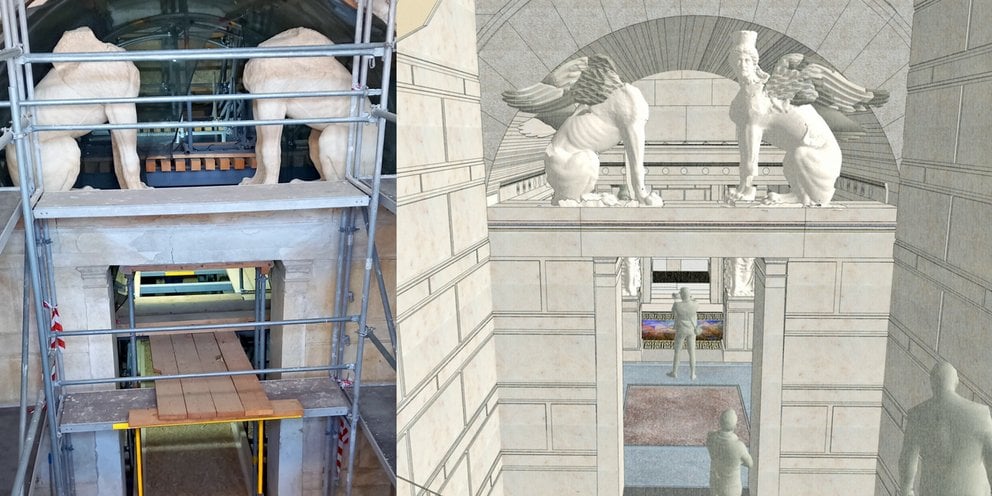
Greece has partially opened the Kasta Tomb monument of Amphipolis which can be visited by specific groups of people as of Tuesday, nine years after its discovery.
Scientists, researchers, educators, tour operators and people from the local administration of the regional unit of Serres, divided into groups of five people and accompanied by a guard or archaeologist, are being given the opportunity to visit the interior of the Kasta Tomb and admire part of its decoration.
According to Culture Minister Lina Mendoni, who inspected the progress of the works, the visitors will get a satisfactory view of the monument, as they will be able to see the marble material that has been reassembled, the sphinxes at the entrance and the preserved Caryatids.
Also, these first visitors will be able to view from a certain distance the burial trench, which is impressive in its size and construction.
The burial monument will open to the general public in 2027, five years behind schedule, when all the necessary infrastructure, restoration and regeneration of the surrounding area will have been completed.
Amphipolis Tomb initially thought to be the burial place of Alexander
The Amphipolis Tomb is the largest burial mound ever discovered in Greece and by comparison dwarfs that of Philip II of Macedon, father of Alexander the Great, in Vergina.
The first excavations at the mound in 1964 led to the exposure of the perimeter wall, and further excavations in the 1970s uncovered many other ancient remains. The inner tomb was first discovered in 2012 and entered in August 2014.
Initial public speculation that, due to its size and cost of construction, it could be the tomb of Alexander the Great, was dismissed by experts when commenting on the published findings, as the available historical records mention Alexandria in Egypt as the final resting place of Alexander’s body.
Nevertheless, due also to Alexander’s associations with the city it is thought likely to be the tomb of a close relation.
The excavation team argued that the tomb was a memorial dedicated to the dearest friend of Alexander the Great, Hephaestion. Others argue that Olympias, the mother of Alexander, was buried here.

The three chambers of the Amphipolis tomb
The tomb complex is surrounded by an almost circular wall 158m in diameter and 3m high made of limestone covered with marble from the island of Thassos, 60 km from Amphipolis.
The tomb consists of three chambers. In the first chamber, there are two sphinxes guarding the main entrance to the tomb. The floor is paved with pieces of white marble embedded in red mortar.
The second chamber is 4.5m wide, 3m long and around 6.5m high. The lintel leading to the second antechamber is supported by two caryatids. They each stand on a 1.4m high platform and are 2.27m tall.

The entire floor is decorated with a mosaic of expert craftsmanship, though it was never intended to be seen. It uses black, white, grey, yellow, blue and red pebbles and is framed with a meandering geometric pattern and a wave pattern on the inside.
The burial chamber is 4.5 x 4.5m and is separated from the second chamber by a double marble door carved to imitate wooden doors with fittings and nails.
The box-shaped tomb is embedded in the floor which is paved with ashlars. According to a report by the Greek Ministry of Culture, nails from a wooden coffin and decorative elements made of bone and glass remained from the burial in the otherwise robbed grave.
The remains of five people were found here. The deceased were a 60-year-old woman, two men aged 35 to 45, an infant and another person who was cremated. The younger man showed signs of unhealed, possibly fatal wounds.
See all the latest news from Greece and the world at Greekreporter.com. Contact our newsroom to report an update or send your story, photos and videos. Follow GR on Google News and subscribe here to our daily email!



